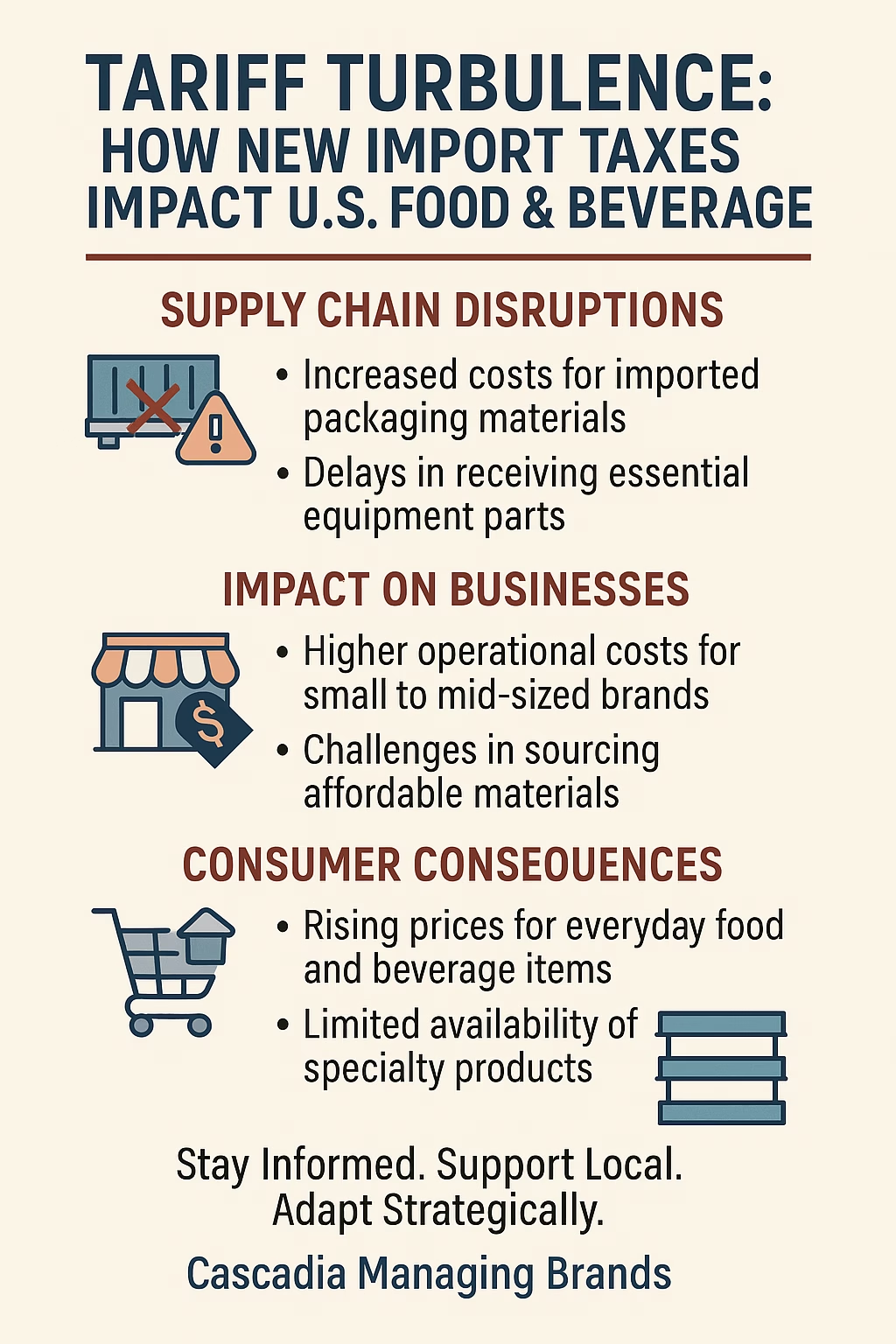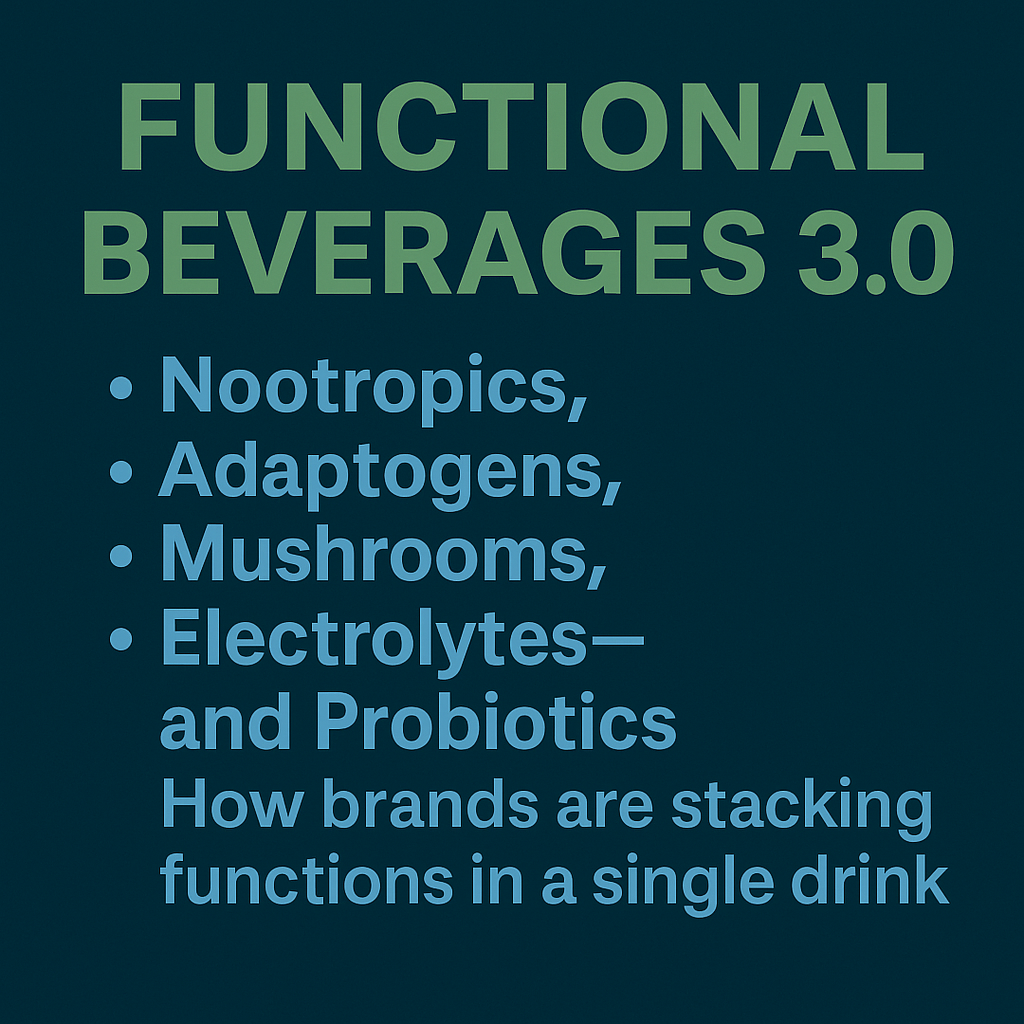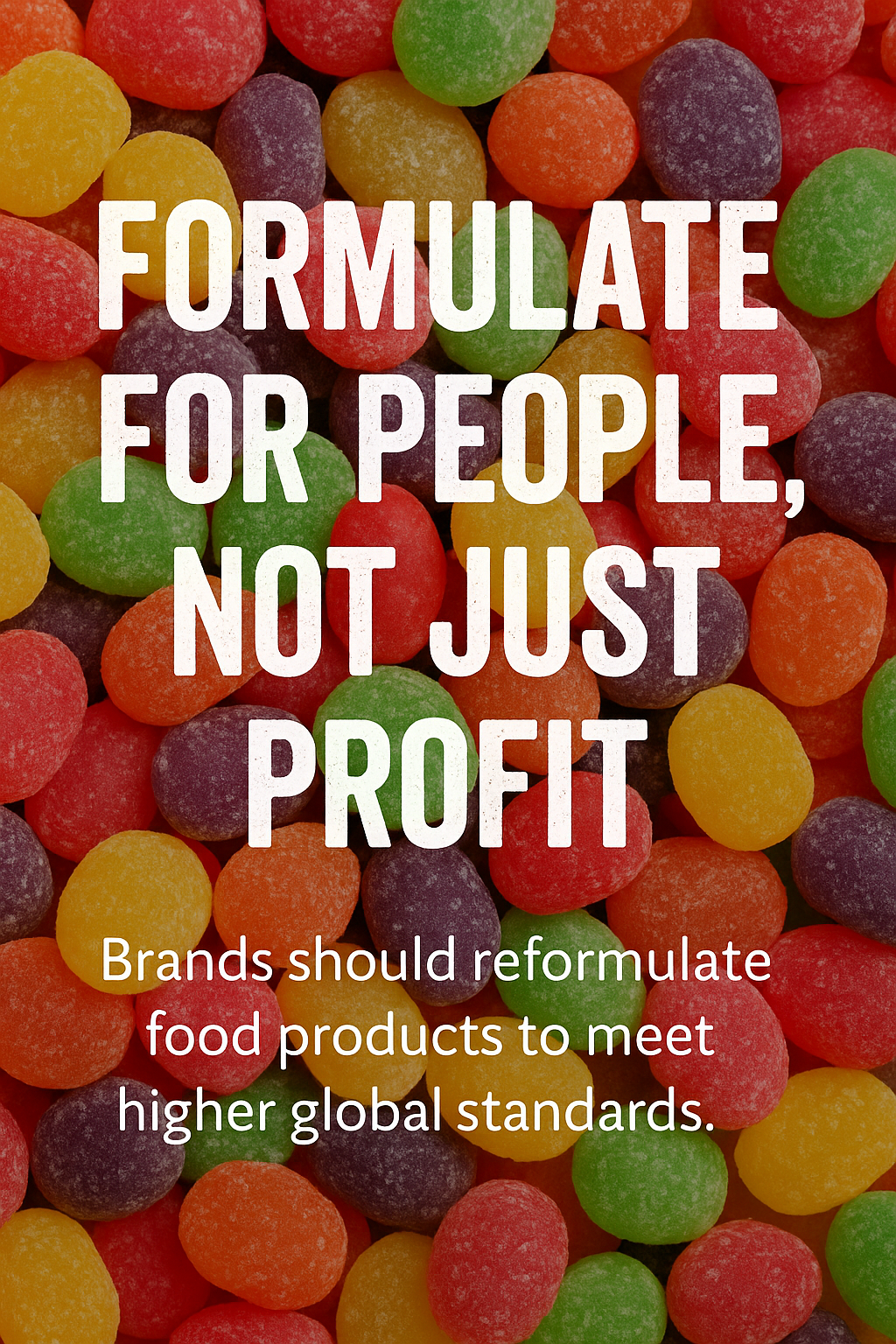The functional beverage space is evolving—fast. What started with protein shakes and vitamin waters has transformed into a sophisticated market…
The End of De Minimis: Why a Tariff on Temu and Shein Could Quietly Disrupt the U.S. Food & Beverage Industry
At first glance, today’s headlines about the end of the de minimis exemption—and the 145% tariffs now hitting small Chinese shipments—seem mostly about clothes, toys, and cheap gadgets.
But hidden beneath the noise about fast fashion and home décor lies a potential ticking time bomb for U.S. food and beverage companies.
Here’s why this matters far more than most industry insiders—and certainly most consumers—currently realize.
1️⃣ Packaging Shockwaves: The Supply Chain Domino Effect
Most emerging and mid-sized U.S. food and beverage brands do not produce packaging domestically. Why?
- U.S. packaging production is expensive and requires large MOQs (Minimum Order Quantities)
- Many specialized items (custom caps, unique glass bottles, biodegradable films, holographic shrink sleeves) come from China or Southeast Asia
- Even large U.S. companies buy Chinese molds, dies, and packaging components
Brands—especially startups—routinely source:
| Component | Example |
|---|---|
| Bottle caps | Custom tamper-evident caps |
| Film labels | Specialty shrink sleeves |
| Pouches | Flexible barrier pouches |
| Straws & utensils | Compostable and specialty items |
| Displays | Retail POS stands & case stackers |
Before today:
These items often shipped in small, $300 to $800 batches to avoid duties and storage issues.
Now:
Those same items face 145% tariffs—or more. A $500 shipment could now cost $1,225 or more before shipping.
Impact:
👉 Startups and craft brands will be squeezed out of innovation or forced to increase retail prices.
👉 Mid-size brands will either absorb costs (cutting already tight margins) or pass them along to consumers.
2️⃣ Co-Packer Crunch: Rising Costs and Delays
Many co-packers, even for established brands, source replacement parts, filters, and small run packaging from China under de minimis rules.
Now:
- Parts will cost more and take longer due to customs delays
- Maintenance and repairs may lag, reducing line uptime
- Small brands trying to scale will face bottlenecks or higher MOQ minimums
Consumer impact:
👉 Production delays may lead to more out-of-stocks
👉 New product launches may be postponed or canceled
👉 Rising wholesale costs will hit grocery shelves by late summer or fall 2025
3️⃣ Retail Display & POS Disruption: No More Cheap Merchandising Tools
Many U.S. brands—especially smaller ones—order customized POS materials or retail displays from overseas:
- Corrugated display shippers
- Branded shelving
- Metal racks
- Shelf talkers and wobblers
De minimis allowed test runs and small regional orders without punishing tariffs.
Now:
Small orders for displays or marketing materials will become prohibitively expensive. Domestic options require long lead times and large minimum orders.
Impact:
👉 Brands will reduce or eliminate retail promotions, hurting shelf visibility
👉 Large brands may monopolize endcap and promotional space even more
👉 Independent retailers will see fewer creative displays and merchandising support
4️⃣ Ingredient and Tool Sourcing for DTC Brands
Hundreds of direct-to-consumer food brands, spice companies, specialty oils, and baking kits rely on overseas suppliers for:
- Small-run ingredients (specialty spices, sweeteners, rare teas)
- Kitchen tools included in bundles (spoons, whisks, glass jars)
- Custom inserts or gift packaging
These were often imported in low-cost, under-$800 batches.
Now:
👉 Those items will either stop arriving or become 2x to 3x more expensive
👉 Subscription box prices will rise
👉 Some companies may shut down DTC offers entirely
5️⃣ Lower-Income Shoppers Hit First—And Hard
A CNN article dated May 2, 2025 pointed out that 48% of de minimis shipments went to America’s poorest zip codes.
That includes:
- Kitchen gadgets
- Food prep items
- Baking accessories
- Budget-conscious home cooking tools
Consumers who can’t afford $400 mixers or $30 gadgets at Target turned to Temu and AliExpress.
Now:
👉 These consumers will either pay dramatically more or stop buying altogether
👉 Value grocery channels will feel the pinch as accessory items disappear or double in price
👉 Lower-income consumers may reduce purchases of specialty foods and tools
Long-term risk:
👉 A growing divide between affluent and budget-conscious shoppers in food purchasing behavior
👉 Specialty brands may shift to premium-only markets, leaving fewer choices for value shoppers
6️⃣ The Bigger Threat: Innovation Freeze
This is the most serious—and least discussed—impact.
For over a decade, U.S. food and beverage entrepreneurs have relied on global sourcing flexibility to:
- Test new SKUs
- Order small runs of specialty packaging
- Trial promotional concepts
De minimis allowed them to do this without betting the farm.
Without it:
- Cost of testing rises
- Minimum order quantities become barriers to entry
- Smaller, riskier ideas won’t get to market
Result:
👉 Fewer innovative brands
👉 Slower category evolution
👉 Large brands gain more power as barriers rise for small players
A Hidden Impact That May Surprise Everyone
Expect domestic co-packers and U.S. packaging companies to raise prices. Why?
- Demand will spike as brands scramble for U.S. sources.
- Without Chinese competition, U.S. suppliers regain leverage.
Even brands trying to reshore their sourcing will likely face:
- Higher prices
- Longer lead times
- Stricter order minimums
Conclusion: The Unseen Food & Beverage Fallout
The mainstream media is focused on fashion and electronics. But behind the scenes, the end of de minimis could:
- Push small food and beverage brands out of business
- Slow down the launch of new and innovative products
- Lead to higher prices at the shelf
- Reduce variety and choice for all consumers—especially those in lower-income brackets
This won’t happen overnight. But by late 2025 and into 2026, consumers and retailers will start seeing the cumulative effects.
Pro Tip for Brands:
If your business relies on small imports for packaging, ingredients, or promotional materials, start renegotiating with domestic suppliers now. Prices are about to climb—waiting will only increase your costs and risks.







